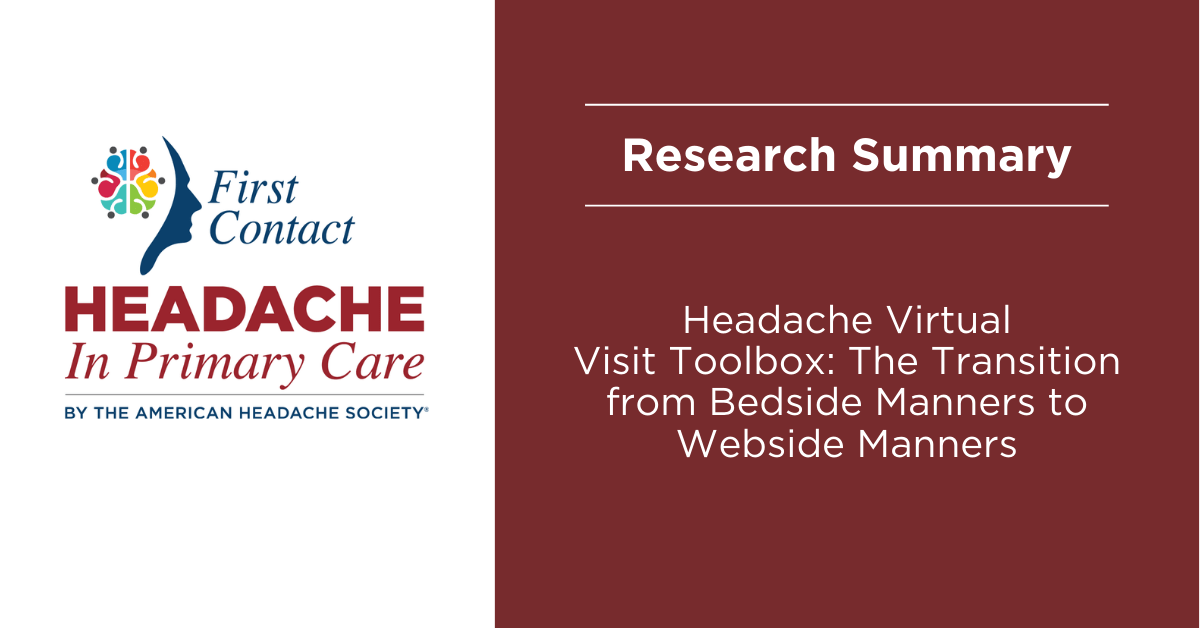
Research Summary: Headache Virtual Visit Toolbox
Headache®: The Journal of Head and Face Pain recently published Headache Virtual Visit Toolbox: The Transition from Bedside Manners to Webside Manners.
In this brief “Views and Perspectives” piece from the September issue of Headache, Drs. Begasse de Dhaem and Bernstein discuss the rapid transition made by health care providers to extensive use of telehealth to help their patients during the COVID pandemic. The article provides useful and practical ideas to strengthen the human connection during virtual visits. The principles are universal and apply to both primary care and headache specialty care.
Study Overview
Here are tips from this timely and important headache virtual visit toolbox article (a summary taken directly from Table 1 in the paper):
- Identify all participants of the visit, including those not in camera range whom patients request to be included in the virtual visit.
- Set up video visits to be able to visualize body language and observe patients’ facial expressions.
- Ensure patients feel safe and comfortable with their virtual visit set-up. Request that vocal or noisy animals be placed in a separate room. Offer to reschedule the visit if the environment is not conducive to a productive, efficient interaction.
- Provide a neutral and peaceful background and set-up on your end. Provide adequate lighting so patients are able to visualize you during the encounter.
- Mute all potential distractions: email, phone, beepers.
- Acknowledge the inherent limitations of virtual visits.
- Ask patients how the COVID-19 health emergency has impacted their lives. Be ready to offer resources on ways to cope with the situation.
- Look directly at the camera to make virtual eye contact.
- Smile and use positive body language.
- Pause to recollect your thoughts and to show patients you are actively listening.
- Show support by sending patients their visit summaries and offering sooner follow-up appointments if possible.
- Practice your skills to stay comfortable with the telemedicine technology you are using.
- Solicit feedback from patients and discuss the transition to telemedicine with colleagues.
- You yourself should maintain healthy habits and practice self-care as a role model for your patients.
We hope these practical ideas collected from direct clinical care experience during these unprecedented times provide insights into the craft of ensuring human connection in our virtual encounters. The full article is a brief, enlightening read. We recommend it for all practicing providers as the use of telemedicine is likely to continue as part of the next generation of healthcare for us all.
This summary is part of the First Contact — Headache in Primary Care initiative, an American Headache Society program that provides educational resources to empower healthcare professionals and improve headache and migraine care. We encourage providers in all stages of their careers to visit our homepage to access educational tools to improve patient care.


